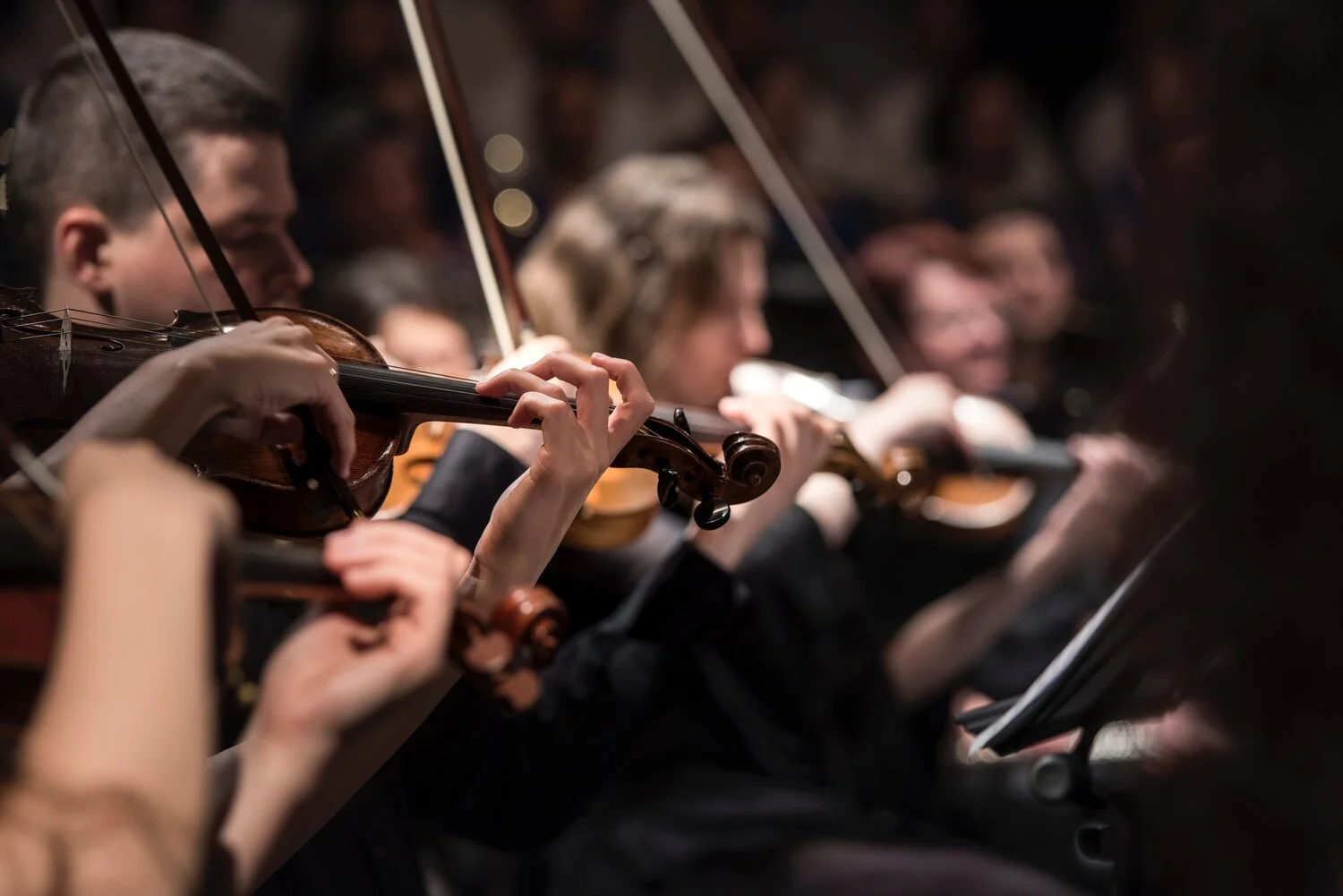Why Play the Violin?
WRITTEN BY JESSICA TOMEY
We have all heard of the astounding benefits that can be achieved from playing or listening to music. Music can be a creative and emotive expressive outlet; its linguistic characteristics enhance language skills; it has many social benefits (it’s fun!), and if that wasn’t enough, it also promotes neurological development. But what about the violin? What can be specifically gained from learning this particular instrument, and why should you pick it amongst a multitude of other fantastic choices?
For those of you who aren’t familiar with the violin, let me give you a brief introduction. The traditional violin model originated in 16th Northern Italy, but it spans back even further than that – simply put, variations of the violin have been around for centuries: a testament to the many rewards of playing such an instrument. Violins we play today are curved shapes typically made of a fine tonewood (maple or spruce), with four strings attached to a scroll, held taught by a bridge just below the centre. As violinists, we create sound by plucking the strings (G, D, A, E), or using a bow (horse-hair stretched on a long wooden stick) to draw sound out. The violin’s distinct timbre has often been likened to the human voice, making it a wonderfully expressive instrument. Many choose the violin due to the variety of repertoire available for violinists, the orchestral and soloist opportunities available, as well as its beautiful sound and extensive range. But aside from all that, what are the actual benefits of learning the violin?
Social and Musical Engagement
As a violinist, you will naturally be able to join bands, orchestras, chamber ensembles and duets due to the violin’s versatility alongside a high demand for violinists. Studies observing string quartets and duets demonstrate high rates of co-performer empathy, due to the need for players to share approaches and ideas, develop interpretative flexibility and increase awareness.[1] Violin duetting also enhances musical phrasing, as well as being heaps of fun.[2] Similarly, string quartet playing can really improve your listening ability.[3] The social benefits of playing the violin within larger ensembles promotes learning in a wider community – and the musical community is a lovely one to be involved in.[4]
Neurological Development
Although rewarding to play, the violin is a challenging instrument to learn. However, the complexities of the process mean it can be very neurologically beneficial. As playing the violin uses two different aspects of the brain, violinists can develop a denser neural network.[5] Playing the violin has even been suggested to improve memory: it has been investigated as potential therapy for Alzheimer’s![6] The concentration and brain flexibility needed for learning a complicated string instrument definitely indicates a natural enhancement of memory and academic development.
Physical Improvement
It may surprise you to learn this, but playing the violin is a very physical activity and therefore great exercise. Exercise has been proven to release endorphins which make your mind feel better as well as your body – and what better way to exercise than playing music? Due to need for increased spatial awareness when playing the violin, studies have shown great improvement in violin students’ posture and flexibility.[7] The violin can also be a fiddly instrument to learn, therefore increased finger dexterity and cognitive ability is a massive plus for violinists!
Enhanced Mentality
Aside from the physical, mental and social impacts of playing the violin, the best reason (in my opinion) to learn the violin is the positive influence it can have on your mind. Violinists experience a number of mental benefits as a result of being immersed in a regular positive musical atmosphere. Participants of a Suzuki program reported that playing the violin was something to look forward to: it gave them a sense of achievement when they saw their progress; as violinists they experienced greater independence and accomplishment, and a rise in confidence (great news!).[8] Even more remarkable is that playing the violin may have the potential to reduce anxiety: the violin’s human timbre could possibly be an effective therapeutic tool as it promotes a pleasing and relaxing sound.[9]
Get involved
So, considering all the many benefits of playing the violin – what better reason to get involved! As a violinist you will learn creative expression, memory training, physical and mental flexibility – but most importantly, you will enjoy engaging with a supportive, thriving community of musicians.
So don’t hesitate to get started if you are thinking of taking up violin lessons – anyone can play!
Resources
Chan, Tsz Hei Fatima. ‘The Impact of Violin Playing Techniques Specifically Designed to
Simulate the Human Voice on Anxiety Reduction of College Students. Thesis, University of Kansas, 2015.
Kelso, Sarah Michele. ‘Experience of Older Adults participating in an intergenerational
Suzuki Violin Program.’ Thesis, University of New York, May 2014.
Lave, J. and Wenger, E. Situated learning: legitimate peripheral participation, (Cambridge
University Press, 1991 in Henley, Jennie. ‘The Musical Lives of Self-Confessed Musicians’ in The Oxford Handbook of Music Making and Leisure, ed. Roger Mantie, 2016.
Mamedova, Nargiz. ‘Memory and the Violin Playing’. Bachelor’s Thesis, 2020, Turku
University of Applied Sciences.
Paillan,Christian. ‘The Pedagogical Benefits of Playing Violin Duets: A Historiography,
Pedagogical Discussion, and Annotated Repertoire List’, Thesis, The University of Alabama, 2021.
Waddington, Caroline. ‘When it clicks: Co-performer empathy in ensemble playing.’ In Music
and empathy, ed. Caroline Waddington. Routledge/Taylor & Francis group, 2017.
Kang, William. ‘The Effect of Violin Lessons on Patients with Alzheimer’s Disease.’ Thesis.
University of Central Florida College of Medicine, 2012.
[1] Caroline Waddington, ‘When it clicks: Co-performer empathy in ensemble playing,’ In Music and empathy, ed. Caroline Waddington. (Routledge/Taylor & Francis group, 2017), 230-247.
[2] Christian Paillan, ‘The Pedagogical Benefits of Playing Violin Duets: A Historiography, Pedagogical Discussion, and Annotated Repertoire List’, (Thesis, The University of Alabama, 2021), 1-6.
[3] Sarah Michele Kelso, ‘Experience of Older Adults participating in an intergenerational Suzuki Violin Program,’ (Thesis, University of New York, May 2014), 212-5.
[4] J. Lave and E. Wenger, Situated learning: legitimate peripheral participation, (Cambridge University Press, 1991), 35. in Jennie Henley, ‘The Musical Lives of Self-Confessed Musicians’ in The Oxford Handbook of Music Making and Leisure, ed. Roger Mantie, 2016.
[5] Nargiz Mamedova ‘Memory and the Violin Playing’, Bachelor’s Thesis, 2020, Turku University of Applied Sciences.
[6] William Kang, ‘The Effect of Violin Lessons on Patients with Alzheimer’s Disease’, Thesis, University of Central Florida College of Medicine, 2012.
[7] Sarah Michele Kelso, ‘Experience of Older Adults participating in an intergenerational Suzuki Violin Program,’ Thesis, University of New York, May 2014.
[8] Kelso, ‘Experience of Older Adults’.
[9] Tsz Hei Fatima Chan, ‘The Impact of Violin Playing Techniques Specifically Designed to Simulate the Human Voice on Anxiety Reduction of College Students, Thesis, University of Kansas, 2015.



